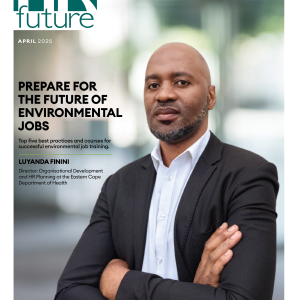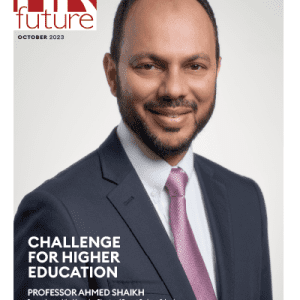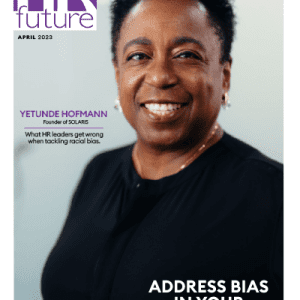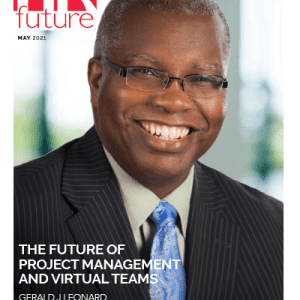A deaf engineer sits in an interview, hands dancing in silence. Could she be the perfect candidate?
Her resume shines with qualifications, but will she communicate in an office tuned to the hearing?
Innovative hiring practices aim to bridge this gap, ensuring talents like hers illuminate the workplace canvas.
2024 Workplace Trends and People with Disabilities
Employers are increasingly aware of untapped talent pools.
A focus on neurodiversity and disability inclusion is no longer peripheral – it is integral to modern business ethos. Companies now prioritize the inclusion of diverse abilities, recognizing that doing so can lead to innovation and a more robust talent pipeline.
The landscape of work accommodations has grown more sophisticated.
Employee-driven customization options, be they in physical workspaces or through assistive technologies, are a testament to the evolving workplace atmosphere. This pivotal shift ensures that individuals with disabilities are not just accommodated, but fully integrated within their professional environments.
Diversity is now embedded in corporate strategies.
The push towards inclusivity has galvanized expansive redesigns of workplace infrastructures. From heightened accessibility to improved communication technologies, organizations recognize the necessity to adapt to the diverse needs of their workforce, including individuals with disabilities. Notably, this has led to a surge in the development of communication technologies for deaf people, enhancing accessibility and fostering inclusive communication within teams.
Crafting Accessible Job Descriptions
Clarity and precision in language underpin inclusive job postings. They must reflect the company’s commitment to diversity, including that of candidates with hearing impairments.
In drafting job descriptions, it is crucial to avoid jargon and ambiguous terms that may inadvertently alienate candidates. Simple, straightforward language facilitates understanding, ensuring the position’s requisites are clear to all prospective applicants.
Use of symbols like “EEO” and “accessibility” should be conspicuously placed, signifying the organization’s dedication to inclusive hiring practices.
Simple Language for Clear Communication
Inclusion begins with the words we choose—simple language manifests a culture of accessibility and understanding across diverse audiences.
Simplified communication fosters equitable understanding, ensuring no applicant is disadvantaged in the recruitment process.
By eschewing complex jargon in favor of clear, concise wording, organizations can eliminate barriers to comprehension, which is particularly vital for candidates with hearing impairments.
The use of plain language embodies respect—honoring a candidate’s ability to understand without presumption—thus fostering inclusivity and championing equal opportunity for all.
Highlighting Company Inclusivity Values
Ingraining inclusivity within the corporate ethos signals a sincere, long-standing commitment to accommodating diverse abilities, rather than a superficial, transient interest. This foundation solidifies trust and draws candidates who value such corporate principles.
Evidencing a dedication to diversity requires more than words; it necessitates tangible action. This commitment is communicated through carefully implemented company policies.
Moreover, inclusive language in corporate literature reflects an understanding environment. Well-articulated core values (supporting documents, training manuals, and marketing materials) fortify this narrative.
Inclusion must extend into every corner of the organization, influencing internal and external communications alike. Partnerships with advocacy groups and the integration of inclusive technologies are testament to this.
Promote the use of resources indicating that the company not only recognizes specific needs but also actively invests in tools to address them within and beyond the workplace.
Ultimately, showcasing a brand’s pledge to inclusivity attracts talent that aligns with those values. It differentiates the company and serves as a beacon for candidates seeking progressive and inclusive employers.
Establishing a Deaf-friendly Interview Process
To engender a hospitable climate for candidates with hearing impairments, it is essential to tailor the interview process with accommodations that foreground inclusivity. Prioritizing clear communication entails preparing interviewers with best practices, such as understanding sign language basics, ensuring eye contact, and employing alternative means of elucidating points. Such measures proactively dismantle obstacles and manifest a company’s commitment to equal opportunity employment.
Interview environments should be optimized to reduce auditory distractions and facilitate lip-reading conditions or sign language visibility. Providing technological support, ranging from amplification systems to communication apps that offer real-time captioning, can significantly enhance the interview experience for hearing-impaired candidates, making it as seamless as possible.
Training Staff on Deaf Culture
Incorporating Deaf culture awareness into your organization is a crucial step towards a more inclusive working environment. It starts with educating your staff about the distinct aspects of Deaf culture and the importance of respect and understanding in professional interactions. This foundational knowledge fosters empathy and collaboration.
An effective way to assimilate this understanding is by participating in deaf culture workshops. These sessions, often led by members of the Deaf community, provide deeper insight into the lived experience of individuals with hearing impairments and the richness of their culture. Through direct engagement, employees gain a heightened appreciation for the diversity and communicative styles present within the Deaf community. For instance, understanding the experiences of CODA (Children of Deaf Adults) can provide valuable perspectives on communication and cultural nuances.
Facilitating regular discussions about deaf culture in the workplace can help staff reflect on their potential implicit biases and promote a culture of continuous learning. As employees explore topics such as the historical context of Deaf culture, the significance of American Sign Language (ASL), and the diverse needs within the hearing-impaired community, they are better equipped to interact respectfully and effectively.
Adapting recruitment and training materials to be inclusive of Deaf culture principles is an essential step in demonstrating a genuine commitment to accessibility. It’s an invitation for candidates with hearing impairments to see themselves as valued members of the team. Furthermore, it signals to all employees the organization’s dedication to a workplace that embraces diversity in all its forms, creating a foundation of mutual respect and understanding. Empowering staff with the knowledge and tools to be allies in this endeavor is vital to aid in bridging communication gaps.
Providing Sign Language Interpreters
Sign language interpreters are a crucial accommodation for candidates with hearing impairments.
- Pre-screening coordination. Determine if the candidate requires an interpreter during the initial application process.
- Qualified interpreters. Ensure that the interpreters provided are certified and well-versed in the candidate’s preferred sign language.
- Pre-interview briefing. Brief the interpreter on any specific terminology or company acronyms that may be used during the interview.
- Technology check. Confirm that all necessary technology for remote interpreting is functional, if applicable.
- Post-interview feedback. Offer the candidate an opportunity to provide feedback on the interpreting service to continuously improve the process.
Maintaining clear and accurate communication is fundamental throughout the hiring process.
Providing interpreters not only complies with legal requirements but also demonstrates a commitment to inclusivity.
Leveraging Assistive Technologies
Assistive technologies are indispensable tools that create a bridge between candidates with hearing impairments and their potential employers. These innovations range from real-time captioning services to video relay services (VRS), each uniquely designed to facilitate communication. The employment of such technologies is a critical demonstration of an organization’s adherence to inclusive recruitment practices.
The integration of video relay services, in particular, revolutionizes the interview process for individuals with hearing impairments, allowing for seamless sign language interpretation. This thoughtful incorporation of assistive technology reflects an employer’s commitment to equal opportunity and undeterred accessibility.
Video Interviews with Captioning
When it comes to talent acquisition, offering video interviews with captioning is a strong testament to an organization’s dedication to inclusivity. This feature allows candidates with hearing impairments to engage in interviews with confidence, knowing that their needs are recognized and accommodated.
Enhanced comprehension and communication are at the forefront with captioned video interviews. These textual overlays enable equal participation by ensuring that candidates understand the questions and context without delay.
Organizations can now leverage advanced software platforms to streamline their interview processes. These technologies ensure that live dialogue is captured accurately and swiftly, enabling a fluid conversation that is inclusive of individuals with hearing impairments. Such provisions channel the ethos of diversity within the hiring practices of visionary businesses.
Incorporating real-time captioning not only aids in the clarity of the spoken word but also helps mitigate the cognitive load for candidates who are reading captions while formulating responses. Ensuring linguistic precision, especially in a high-pressure scenario such as an interview, establishes a sound foundation for candidates to showcase their true competencies unhindered by communication barriers. It is an embodiment of an equitable and mindful approach to candidate evaluation, one that mirrors the organization’s commitment to inclusivity in all its facets.
Utilizing Apps for Deaf People
Innovative apps for deaf people are critical in creating an inclusive recruitment process for candidates with hearing impairments.
- Visual Alerts and Notifications: Apps can provide visual or tactile alerts for incoming messages or calls, ensuring candidates don’t miss important communications.
- Speech-to-Text Features: Real-time captioning during interviews helps facilitate understanding, providing an immediate written account of the conversation.
- Sign Language Interpretation Services: Some apps offer live sign language interpretation, bridging communication gaps efficiently.
- Videophone Capabilities: Enabling face-to-face communication through video calls allows candidates to use sign language or read lips.
- Text-Based Communication Platforms: These apps allow for seamless messaging and emailing, which could be preferable for some candidates with hearing impairments.
Easy access to these resources sets the stage for a truly accessible interview experience.
Employing these tools demonstrates a company’s foresight in fostering a barrier-free hiring environment.
Ongoing Support for Deaf Employees
After onboarding, the provision of continuous support becomes essential in fostering a workplace where deaf employees can thrive. Regular check-ins should be scheduled to ensure that accommodations remain effective and that communication barriers do not hinder performance. Additionally, educational sessions for hearing colleagues can enhance understanding and cooperation within the team, creating a more cohesive and inclusive environment.
Training and development opportunities should likewise be fully accessible to deaf employees, with necessary accommodations such as sign language interpreters or captioning services readily available. Employers must remain vigilant and proactive to remove any inadvertent obstacles to advancement for deaf employees. By doing so, they not only comply with legal standards but also promote an equitable culture where every employee’s contribution is valued and their potential fully realized.
Creating an Inclusive Workplace
An inclusive workplace is the cornerstone of equitable employment. It requires thoughtful design and deliberate action to ensure accessibility for deaf employees at all organizational levels.
In 2017, forward-thinking companies began integrating specialized technology to aid communication, such as video relay services (VRS), video remote interpreting (VRI), and telecommunications relay service (TRS), establishing a new benchmark in inclusivity.
Now, this mindset extends beyond technology, requiring a cultural shift that embraces diversity as a source of innovation and strength, rather than a compliance checkbox.
Leading firms are adopting inclusive hiring practices, ensuring their interview processes are accommodating, and leveraging technologies like AI-powered transcription services to foster effective communication.
To sustain inclusivity, companies must embrace continuous improvement, actively seeking feedback from their deaf employees to refine and enhance their workplace strategies.
Investing in Continuous Education and Training
Education is fundamental to progress.
Organizations must recognize that establishing inclusive workplaces requires ongoing educational efforts. To remain effective, companies should provide regular training programs that focus on inclusivity and effective communication strategies, particularly in relation to interacting with individuals with hearing impairments. Moreover, investing in up-to-date training ensures continual adherence to the best practices of diversity and inclusion.
Knowledge enhances empathy and inclusion.
Fostering an environment of continuous learning encourages employees to understand and appreciate the experiences and challenges faced by their deaf colleagues. This helps in creating a supportive and accommodating workplace.
Training aligns with evolving accessibility guidelines.
Accessibility standards and best practices are continually evolving. Regular training sessions ensure that employees are aware of – and comply with – these changes. This commitment to learning creates a culture of inclusivity where employees become advocates for accessible practices within the organization.
The landscape of accessibility is dynamic and ongoing.
With the rapid advancements in technology, training must keep pace to effectively integrate new tools that support communication for deaf and hard-of-hearing individuals. Since the passage of the Americans with Disabilities Act (ADA) in 1990, the landscape for inclusion has transformed, necessitating continual education and adaptation to maintain an environment where accessibility is not an afterthought but a forethought.
Conclusion
Our collective obligation is clear.
Thus, fostering an organizational culture that values diversity and inclusion requires more than policy—it necessitates a genuine commitment. By implementing strategies that bridge communication gaps, businesses can unlock the full potential of an untapped talent pool, enriching their teams with diverse perspectives and skills. This involves adopting inclusive recruitment practices tailored to individuals with hearing impairments, which not only aligns with legal requirements but elevates the organizational ethos.
When we reconceptualize recruitment methodologies to be inclusive of auditory diversity, we acknowledge a fundamental principle: workforce diversity transcends mere compliance—it enriches innovation and operational success. As we integrate accessibility into the very fabric of the hiring process, we demonstrate to all current and future employees that inclusivity is not peripheral; it is pivotal.
Guest writer.













